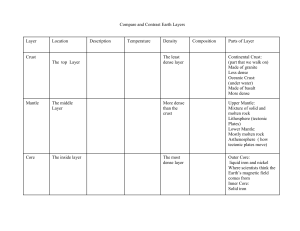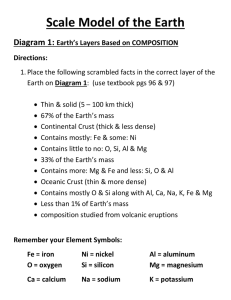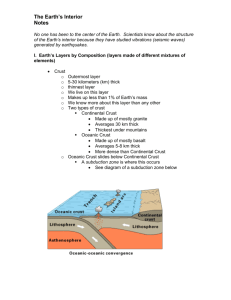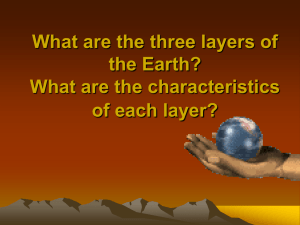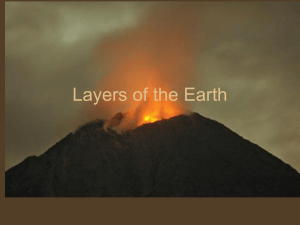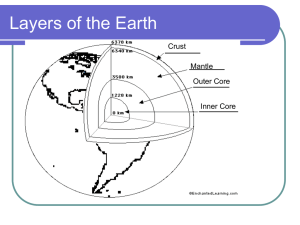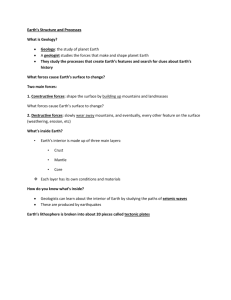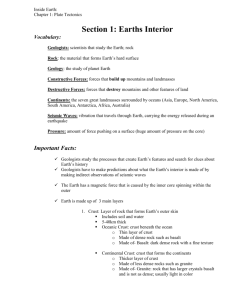File
advertisement
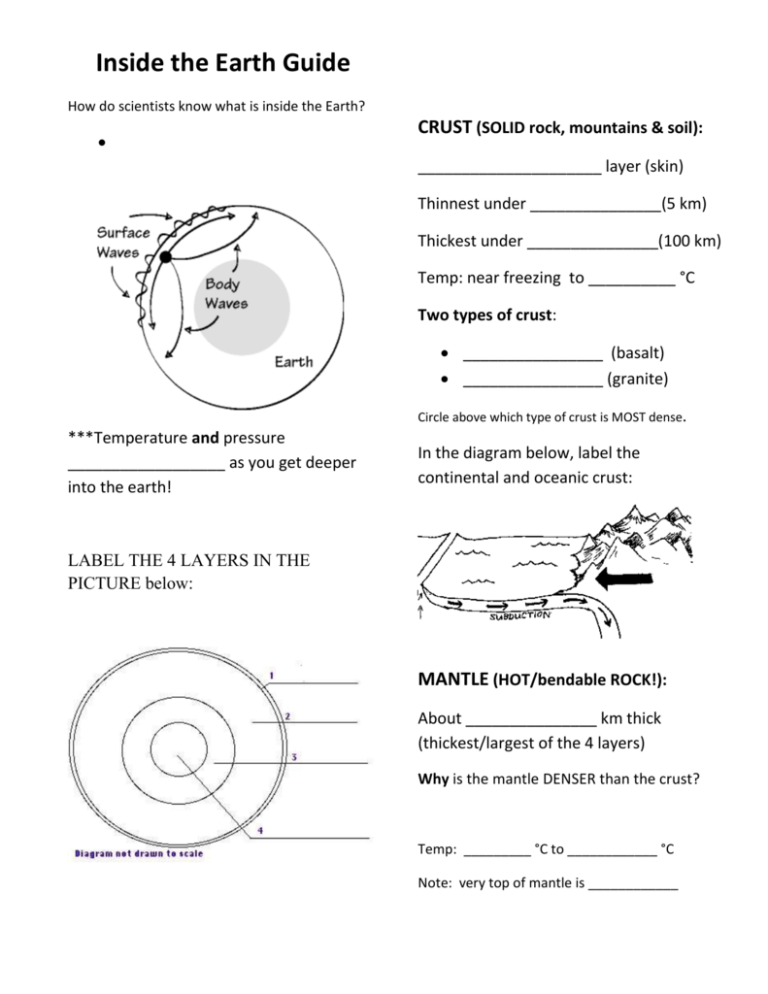
Inside the Earth Guide How do scientists know what is inside the Earth? CRUST (SOLID rock, mountains & soil): _____________________ layer (skin) Thinnest under _______________(5 km) Thickest under _______________(100 km) Temp: near freezing to __________ °C Two types of crust: ________________ (basalt) ________________ (granite) Circle above which type of crust is MOST dense. ***Temperature and pressure __________________ as you get deeper into the earth! In the diagram below, label the continental and oceanic crust: LABEL THE 4 LAYERS IN THE PICTURE below: MANTLE (HOT/bendable ROCK!): About _______________ km thick (thickest/largest of the 4 layers) Why is the mantle DENSER than the crust? Temp: _________ °C to ____________ °C Note: very top of mantle is ____________ CORE (inner layer): Mostly made of __________ and nickel (very dense metals—so densest layer) What are the two parts of the core? 1. _____________ core (liquid metal) --temp: _______________________°C and about 2250 km thick 2. _____________ core (_______ metal because of the ____________) --temp: 5000--______________°C and about ________ km thick SO WHAT DOES THIS HAVE TO DO WITH PLATE TECTONICS? How does heat move around (heat transfer)? 1. ____________________--heat from sun 2. _____________________--from touching 3. **________________________ o warm (less dense) ______________ o cold (more dense) ______________ Where does the convection heat come from? Two parts of the earth: 1. ____________sphere—the SOLID/rigid outer part of earth (___________ and upper mantle)— this part of the earth is broken into tectonic ___________ 2. _____________sphere—the soft, thick LIQUID/hot plastic-like part of mantle (flows slowly) The lithosphere ____________ on the asthenosphere. Lithospheric is divided into 10 major tectonic plates (most contain oceanic and continental crust). Example: we live on the __________________________________ plate What’s so interesting about California? (Label where it is located)
